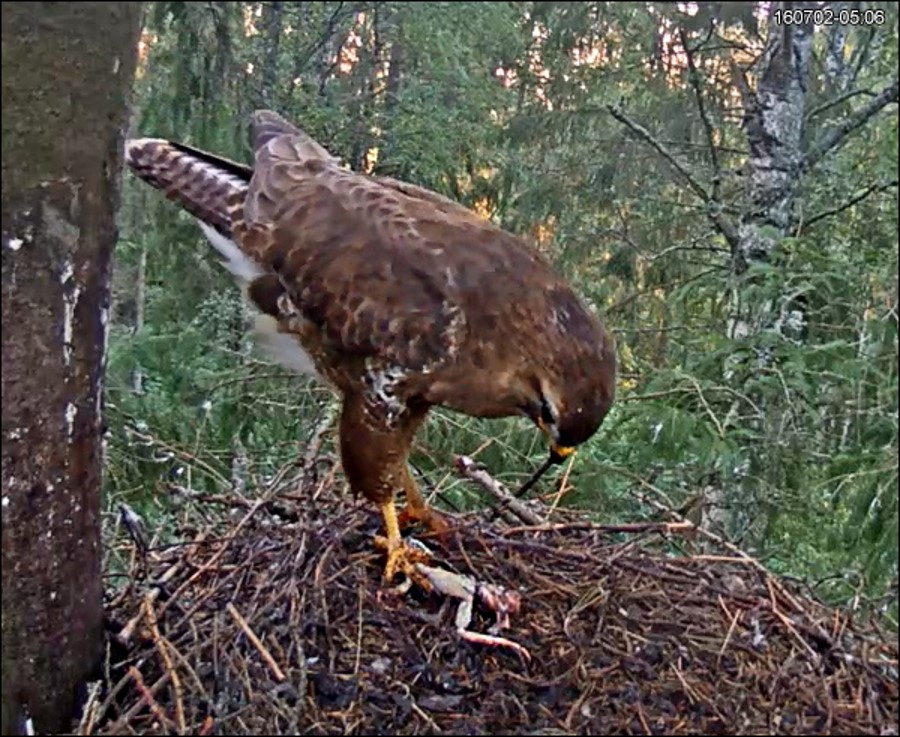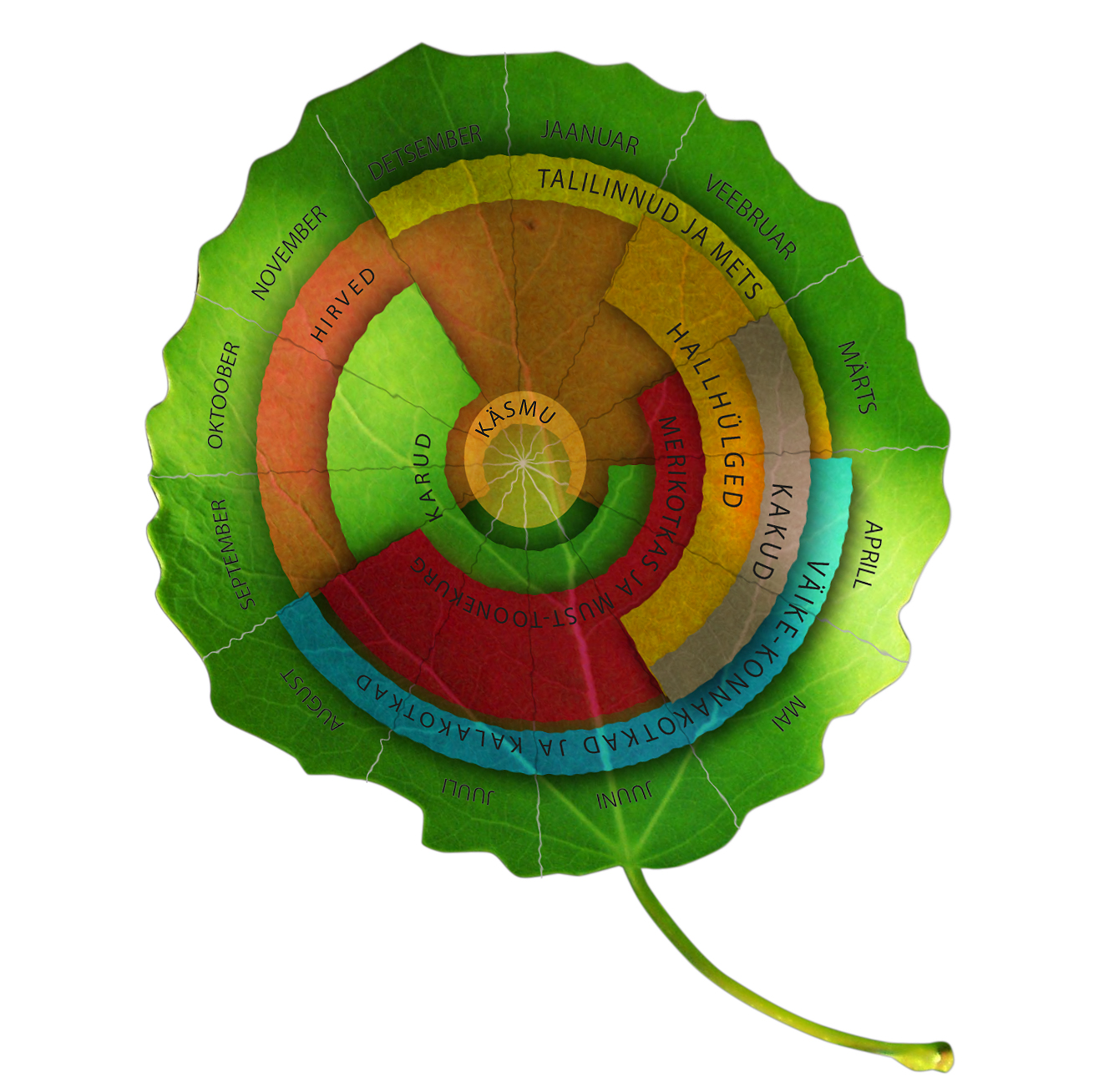Webcam image captured by Hagnat, LK forum
Summary of buzzard camera events Hagnat, LK forum
Translation Liis
On July 2nd we saw the buzzards at the nest for the last time
Buzzard Hiireviu Buteo buteo
We always continue hoping to see the nest inhabitants visiting the birthplace. But for buzzards the ties to the nest break at once on leaving (although certainly there may be exceptions).
Buzzards start their autumn migration in September-October, and LK will have reports from the migration. The young buzzards that were hatched this year will begin nesting in their third calendar year.
We certainly wish the young birds wind in their wings and good luck!
Hagnat has made a thorough review in the LK forum of food deliveries in the buzzard nest:
Summary of the last three weeks (10 - 30 June 2016) of food delivery to the young Buzzards
In addition to watching the web cam directly, from June 11 onwards I have searched the videos in the archive in detail for food items brought to the nest.
On June 30 the oldest young was 49 days old and the youngest 46. On June 26 the young started leaving the nest. The morning of July 1 was the last time food was delivered to the nest and eaten there, and the evening of that day the last young was seen on the nest.
The number of food items delivered to the nest per day
On June 11 nothing was delivered because of the bad weather.
I have no explanation for the low number on June 10. The day before it was on a normal level (16).
Variation in the food per day as a percentage of the daily totals.
- Mammals were usually voles, but also rats, moles and mice, usually impossible to tell witch species.
- Amphibians were Common toads and frogs of unknown species. Toads seemed more popular than frogs, although the young usually needed the help of one of the parents to eat them, while they had no problems with frogs.
- Invertebrates were earthworms, likely of various species. Some were very big. Most were caught after rainy weather, most notably on June 12 and the following four days.
- Birds were not identified to species in this period of time. Usually it were juvenile songbirds or waders/meadow birds. Quite a few looked like thrushes or pipits. On June 13 an unidentified much bigger bird was brought and eaten. Earlier, on June 2, an exceptional prey was a Great Spotted Woodpecker.
Distribution of the four categories over the total of 222 prey items
In total almost as many earthworms(invertebrates) as amphibians, but of course the volume of worms is much less than any of the other animals. Perhaps one average vole equals the weight of 20 worms. But in the end it is the nutritional value that counts. Bones and fur or feathers are swallowed but later regurgitated in pellets.
Many thanks to Hagnat for the informative overview! See also the entries in the forum: LINK



